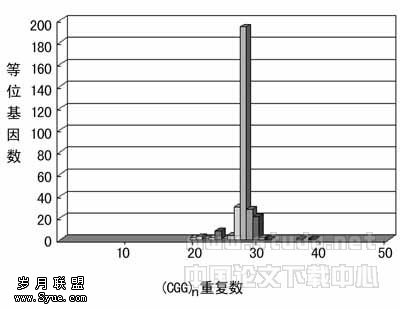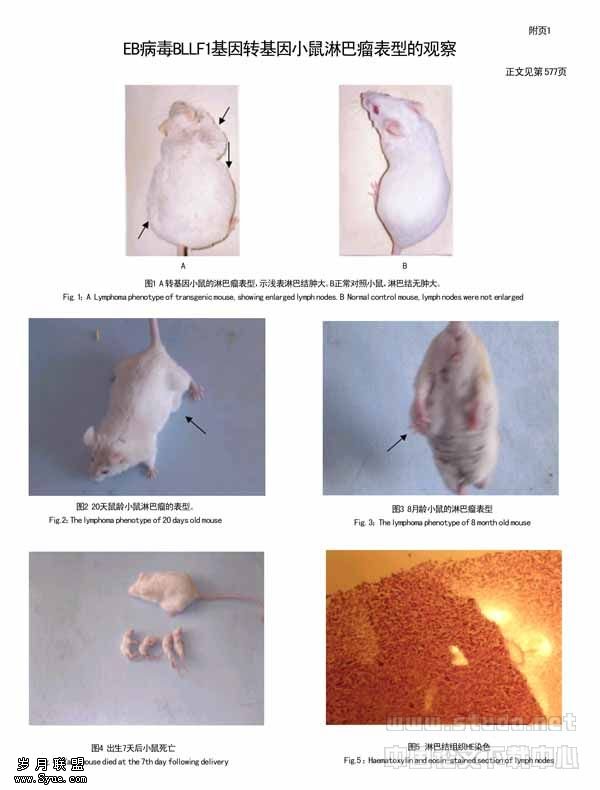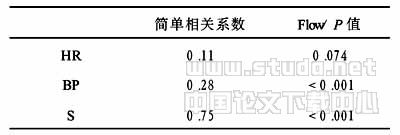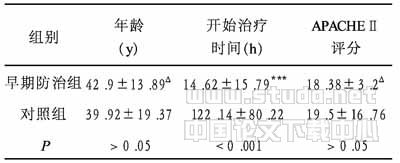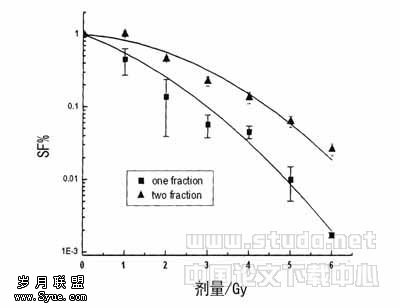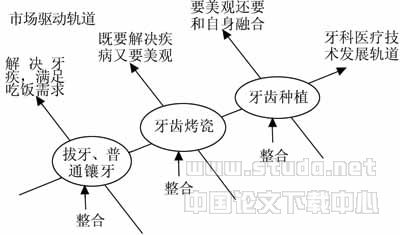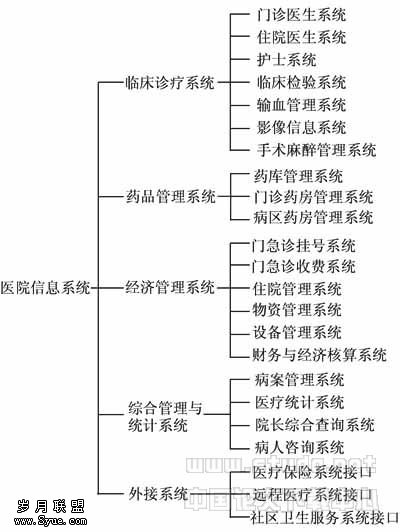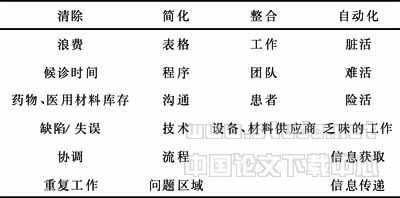Pegylated Liposomal Doxorubicin Consolidation Therapy after
作者:Rodney P. Rocconi, J. Michael Straughn, Jr., Charles A. Leath, III, Larry C. Kilgore, Warner K. Huh
Mack N. Barnes, III, Edward E. Partridge, Ronald D. Alvarez
【关键词】 Ovarian,cancer,•,Chemotherapy,•,Consolidation,therapy,•,Doxorubicin
ABSTRACT
Objective. To assess the feasibility of using pegylated liposomal doxorubicin (PLD) as a consolidation therapy in patients with advanced ovarian cancer who have attained a clinically defined complete response to initial platinum/paclitaxel-based chemotherapy.
Methods. Patients diagnosed with suboptimally debulked stage IIIC/IV epithelial ovarian cancer who attained a clinically defined complete response at the completion of platinum/paclitaxel-based chemotherapy were eligible for this protocol. Patients were treated with PLD at a dose of 40 mg/m2 every 28 days for four cycles. A survival analysis was calculated using the Kaplan-Meier method.
Results. Of the 30 patients enrolled, 29 were evaluable. Twenty-three patients (79%) completed all four cycles of consolidation therapy. Palmar-plantar erythrodysesthesia was the most common toxicity. Six patients remained clinically without evidence of disease with a median follow-up of 35 months from the completion of primary chemotherapy. The median progression-free interval was 15 months, and median overall survival time was 31 months, with 47% of patients achieving a 4-year survival.
Conclusions. Consolidation therapy with PLD chemotherapy administered to women with advanced epithelial ovarian cancer after initial chemotherapy appears feasible based on its toxicity profile. Considering the tolerability of this agent, further investigation is needed to depict the optimal dose and schedule needed for consolidation therapy.
INTRODUCTION
Ovarian carcinoma is the leading cause of death in patients with gynecologic malignancies. The estimated incidence and mortality for 2005 are 22,220 and 16,210, respectively [1]. The majority of women diagnosed with advanced epithelial ovarian cancer (EOC) demonstrate a clinically defined response to platinum/paclitaxel chemotherapy [2], with overall response rates exceeding 70%. Complete clinical response rates are approximately 30%50% [3, 4] for patients with suboptimally resected disease. Unfortunately, these responses are not durable, with the majority of patients demonstrating disease recurrence [35].
Several strategies have been explored to improve outcomes and the prognosis of patients with advanced EOC. However, randomized trials have failed to demonstrate an overall survival benefit with prolonged chemotherapy in these patients, with additional cycles of chemotherapy associated with significant toxicity [6, 7]. Despite the lack of an overall survival benefit from previous studies, one randomized trial demonstrated an extended disease-free interval with prolonged paclitaxel after first-line therapy [8]. Thus, patients with a complete clinical response to standard chemotherapy appear to be ideal candidates for additional therapy designed to consolidate the initial response and prolong the disease-free interval. The optimal consolidation agent should target persistent, slow-growing tumor cells without excessive toxicity. One strategy for consolidation has been to continue standard therapy; however, a different chemotherapeutic agent might offer the advantage of eradicating tumor cells that were resistant to the primary treatment.
The anthracycline antibiotic doxorubicin represents one such agent because it possesses a broad spectrum of antineoplastic actions, which has been used in several solid tumors, such as tumors of the breast, ovary, bladder, and thyroid. The conventional formulation of doxorubicin is rapidly cleared from the bloodstream and has a large distribution volume. A pegylated-liposomal encapsulation of doxorubicin (PLD; Doxil®; Tibotec Therapeutics, a division of Ortho Biotech Products, L.P., Bridgewater, NJ), protects the liposome from detection and destruction by the reticuloendothelial system, which increases the agent’s half-life. Additionally, liposomal encapsulation of doxorubicin reduces nonspecific delivery to normal tissues and avoids the high plasma levels responsible for toxicity, such as the cardiotoxicity noted with conventional doxorubicin. These pharmacologic activities improve the specificity for tumors by allowing higher drug levels to extravasate through the abnormally permeable vessels characteristic of many tumors. PLD has demonstrated activity in EOC as a first- or second-line agent [9, 10] and has shown an acceptable safety profile.
With the rationale of using an alternative agent from that used in standard therapy for consolidation therapy, PLD represents a potential consolidation agent given its broad spectrum of antineoplastic action, liposomal-derived specificity, proven activity in ovarian cancer, and documented safety in several studies. Our goal was to assess the potential feasibility of PLD as a consolidation strategy following the attainment of a clinically defined complete response to initial platinum/paclitaxel-based chemotherapy in patients with suboptimally debulked advanced ovarian cancer.
METHODS
Eligibility Criteria
Institutional Review Board approval of this single-institution nonrandomized pilot study was obtained prior to patient accrual. Patients who had histologically confirmed International Federation of Gynecology and Obstetrics (FIGO) stage IIIC or IV suboptimally debulked EOC were eligible for this protocol if they achieved a clinically defined complete response to six cycles of platinum/paclitaxel-based chemotherapy. Clinically defined complete response consisted of no evidence of disease on both physical exam and computerized tomography, and a cancer antigen (CA)-125 level < 35 U/ml. It was required that all patients had a performance status score of 02 by Zubrod criteria and signed informed consent. Patients with evidence of organ failure, poor performance status, or previous treatment for malignancies were ineligible for the protocol.
Treatment Plan and Follow-Up
Patients received PLD as a 1-hour infusion of 40 mg/m2 every 28 days for four cycles. Treatment delays of 12 weeks and dose reductions of 25% were allowed for drug-related toxicities (defined by the National Cancer Institute Common Toxicity Criteria). Patients were followed every 3 months for the first 2 years and then every 6 months until documentation of disease recurrence. Patients were removed from treatment for unacceptable toxicities. The disease-free survival (DFS) time was calculated as the date of completion of primary platinum/paclitaxel-based chemotherapy to the date of recurrence. A survival analysis was calculated using the Kaplan-Meier method.
RESULTS
Patient Characteristics
Between December 2000 and March 2003, 30 patients were enrolled in this study, with 29 of them evaluable. One patient was ineligible for evaluation because of inaccurate staging. The median age was 57 years (range, 4679), and all patients were white. At the time of primary cytoreductive surgery, 26 patients had FIGO stage IIIC disease, and three patients had stage IV disease. All patients had suboptimally debulked disease. Eighteen patients had papillary serous histology, six had endometrioid histology, and five had mixed histology (Table 1).
Evaluation of Toxicity
Twenty-three of the 29 evaluable patients (79%) completed all four cycles of consolidation therapy with PLD. The protocol allowed for either a dose reduction or treatment delay for untoward toxicities at the physician’s discretion. As a result of drug-related toxicities, 14 patients required a 25% dose reduction. A dose reduction was performed for 11 patients with grade 2 or 3 palmar-plantar erythrodysesthesia (PPE), two patients with grade 3 myelosuppression, and one patient with grade 2 mucositis. A treatment delay was necessary for eight patients (five for PPE, two for myelosuppression, and one for a viral syndrome). Of note, 17 of 22 (77%) patients who required a dose reduction or treatment delay completed the scheduled four cycles of consolidation therapy. Although six patients discontinued treatment after three cycles, all patients received at least three cycles of therapy. Five patients had the last cycle discontinued because of PPE, and one patient had treatment discontinued because of recurrent disease.
The majority of patients (83%) in the study experienced mild toxicity with consolidation therapy, with a total of 54 events noted (Table 2). All toxicities were grades 13, with no grade 4 toxicities noted. There were no treatment-related deaths. The most common toxicities of any grade were PPE (n = 16), neuropathy (n = 9), nausea/vomiting (n = 9), stomatitis/mucositis (n = 8), and neutropenia (n = 4). Of the 54 toxicities noted, only eight (15%) were grade 3: PPE (n = 4), myelosuppression (n = 3), and nausea/vomiting (n = 1).
Responses and Survival
Of the 29 evaluable patients, six remained clinically without evidence of disease with a median follow-up of 35 months from the time of completion of primary chemotherapy (range, 1642 months). Nearly 80% of patients (23 of 29) recurred, with a range of 330 months. Survival analysis by the Kaplan-Meier method demonstrated a median DFS time of 15 months (95% confidence interval [CI], 1020) for all patients (Fig. 1). The median overall survival (OS) time was calculated at 31 months, with a 2-year OS rate of 62% and a 4-year OS rate of 47% (Fig. 2).
Evaluation was also stratified by response to platinum agent (Table 3). The median DFS time was 9 months (95% CI, 711) for platinum-resistant patients and 21 months (95% CI, 1725) for platinum-sensitive patients (Fig. 3). OS was 22 months (95% CI, 2024) for platinum-resistant patients but could not be calculated for platinum-sensitive patients because only 3 of 15 patients had died from their disease at the time of analysis. Seventy-eight percent of platinum-sensitive patients achieved 42 months of survival (Fig. 4).
DISCUSSION
Despite responses to initial cytoreductive surgery and platinum/paclitaxel-based chemotherapy, the majority of patients with advanced EOC experience disease recurrence. Advances in treatment approaches, including consolidation therapy, have yet to demonstrate improved overall survival. In the Gynecologic Oncology Group (GOG) 178 study, patients with advanced ovarian cancer and a complete response to standard chemotherapy were randomized receive either 3 or 12 months of paclitaxel [8]. That study was closed early by the Data and Safety Monitoring Board because of a 7-month longer disease-free interval (DFI) in the 12-month arm. The study provided further rationale to potentially extending the DFI with consolidation therapy.
We evaluated the feasibility of using PLD as consolidation therapy in patients with suboptimally resected disease and a complete clinical response to initial chemotherapy. PLD was well tolerated and had an acceptable toxicity profile. The majority of patients completed all four cycles, with all patients receiving three of the scheduled four cycles. Grade 4 toxicity was not seen in our study. Toxicity was managed with dose reduction, treatment delay, or both, with the majority of patients who underwent either dose reduction or treatment delay completing all four cycles. Consistent with previous reports, the dose-limiting toxicity with PLD was PPE, with 16 patients (55%) experiencing this toxicity. Of note, the majority of toxicities were managed by dose reductions of 25%. Some would argue that the DFS and OS could have been improved by the use of more treatment delays rather than dose reductions in order to give the total scheduled dose of 40 mg/m2.
Despite its tolerability, PLD as a consolidation agent failed to demonstrate an impact on DFS or OS at the dosage and schedule used in this study. Although the 2-year OS rate of 62% is similar to that previously published for Southwest Oncology Group studies (64%) in suboptimally debulked patients using oral altretamine consolidation therapy [11, 12], no difference in survival was noted. The GOG 111 study by McGuire et al. [3] also evaluated stage III/IV suboptimally debulked EOC patients treated with cisplatin plus either cyclophosphamide or paclitaxel. Compared with the cisplatin/paclitaxel arm of that randomized controlled trial, our study demonstrated a similar DFS time, 18 and 15 months, respectively. Although the median OS times were similar in the two studies―31 months with PLD consolidation in our study and 38 months with cisplatin/paclitaxel in the GOG 111 study―our study demonstrated a possible prolongation of survival effect. Forty-seven percent of the patients in our study achieved a 4-year survival, compared with a 30% 4-year survival rate for patients in the GOG 111 study. Although it is difficult to contrast survival in different studies, further investigation is warranted. Of note was the survival noted in patients with platinum-sensitive disease. The median OS in platinum-sensitive patients could not be calculated because only 3 of 15 patients had died from their disease, which accounts for 78% of the patients reaching 42 months of survival.
A potential criticism of our study is that our dose of 40 mg/m2 was insufficient. Inadequate dosage, either per treatment or per total cumulative dose, could be evidenced by the complete absence of grade 4 toxicities. However, in a retrospective study by Rose et al. [13], there was no difference in response rates, progression-free survival, or OS in patients treated with 40 or 50 mg/m2 of single-agent PLD. In that review, 25% of patients who received 50 mg/m2 required a dose reduction because of toxicity, compared with no dose reductions in patients who received 40 mg/m2 [13].
Based on available data involving phase II studies using four cycles of PLD in recurrent second-line treatment, we chose four treatment cycles during protocol development for consolidation. Considering that our study was initiated prior to the results of the GOG 178 study [9], a potential improvement in survival could be possible with the extension of consolidation beyond our chosen four cycles. Although some suggest treatment until progression, difficulty arises in determining the appropriate length of consolidation therapy, for which the benefit of therapy is surpassed by the risks of chemotherapy.
Additionally, one could surmise that, given that the reported objective response rate of PLD has been 9%26% in relapsed ovarian cancer [14], our study could be insufficient in sample size to detect an effect of consolidation, even if one existed. Given that our study supports the tolerability of PLD, we are currently planning to evaluate this subject to determine the maximum treatment duration that maintains satisfactory quality of life.
PLD chemotherapy is well tolerated as a consolidation agent, with an acceptable toxicity profile. To our knowledge, this study represents the only published report of single-agent PLD as a consolidation strategy in epithelial ovarian cancer. Patients receiving PLD consolidation chemotherapy in this study did not show an additional median survival benefit over similar patients in the GOG 111 study. However, a potential prolongation of survival could exist, given that 47% of the patients in this study achieved a 4-year survival compared with only 30% in the GOG 111 study. Considering the tolerability of the agent with the potential for prolonged therapy, we believe this agent warrants further investigation in this setting, with particular attention to the optimal dosage and schedule of PLD for consolidation therapy. Although a similar median OS was seen in the GOG 111 study that evaluated similar patients, we are encouraged by the potential greater 4-year survival, and further investigation at our institution is in development.
DISCLOSURE OF POTENTIAL CONFLICTS OF INTEREST
The authors indicate no potential conflicts of interest.
ACKNOWLEDGMENT
The authors acknowledge Tibotec Therapeutics, a division of Ortho Biotech Products, for their support of this trial as well as the contributions of the patients and families of patients who participated.
REFERENCES
Jemal A, Murray T, Ward E et al. Cancer statistics, 2005. CA Cancer J Clin 2005;55:1030.
Cannistra SA. Cancer of the ovary. N Engl J Med 2004;351:25192529.
McGuire WP, Hoskins WJ, Brady MF et al. Cyclophosphamide and cis-platin compared with paclitaxel and cisplatin in patients with stage III and stage IV ovarian cancer. N Engl J Med 1996;334:16.
Muggia FM, Braly PS, Brady MF et al. Phase III randomized study of cisplatin versus paclitaxel versus cisplatin and paclitaxel in patients with suboptimal stage III or IV ovarian cancer: a gynecologic oncology group study. J Clin Oncol 2000;18:106115.
Ozols RF, Bundy BN, Greer BE et al. Phase III trial of carboplatin and paclitaxel compared with cisplatin and paclitaxel in patients with optimally resected stage III ovarian cancer: a Gynecologic Oncology Group study. J Clin Oncol 2003;21:31943200.
Hakes TB, Chalas E, Hoskins WJ et al. Randomized prospective trial of 5 versus 10 cycles of cyclophosphamide, doxorubicin, and cisplatin in advanced ovarian carcinoma. Gynecol Oncol 1992;45:284289.
Bertelsen K, Jakobsen A, Strøyer J et al. A prospective randomized comparison of 6 and 12 cycles of cyclophosphamide, adriamycin, and cisplatin in advanced epithelial ovarian cancer: A Danish Ovarian Study Group Trial (DACOVA). Gynecol Oncol 1993;49:3036.
Markman M, Liu PY, Wilczynski S et al. Phase III randomized trial of 12 versus 3 months of maintenance paclitaxel in patients with advanced ovarian cancer after complete response to platinum and paclitaxel-based chemotherapy: a Southwest Oncology Group and Gynecologic Oncology Group trial. J Clin Oncol 2003;21:24602465.
Gordon AN, Tonda M, Sun S et al. Long-term survival advantage for women treated with pegylated liposomal doxorubicin compared with topotecan in a phase 3 randomized study of recurrent and refractory epithelial ovarian cancer. Gynecol Oncol 2004;95:18.
Rose PG. Phase I study of paclitaxel, carboplatin, and liposomal doxorubicin in ovarian, peritoneal, and tubal carcinoma: A GOG study. Proc Am Soc Clin Oncol 2000;19:1531a.
Rothenberg ML, Liu PY, Wilczynski S et al. Phase II trial of oral altret-amine for consolidation of clinical complete remission in women with stage III epithelial ovarian cancer: a Southwest Oncology Group trial (SWOG-9326). Gynecol Oncol 2001;82:317322.
Alberts DS, Jiang C, Liu PY et al. Long-term follow-up of a phase II trial of oral altretamine for consolidation of clinical complete remission in women with stage III epithelial ovarian cancer in the Southwest Oncology Group. Int J Gynecol Cancer 2004;14:224228.
Rose PG, Maxson JH, Fusco N et al. Liposomal doxorubicin in ovarian, peritoneal, and tubal carcinoma: a retrospective comparative study of single-agent dosages. Gynecol Oncol 2001;82:323328.
Thigpen JT, Aghajanian CA, Alberts DS et al. Role of pegylated liposomal doxorubicin in ovarian cancer. Gynecol Oncol 2005;96:1018.
ADDITIONAL READING
Thigpen JT, Aghajanian CA, Alberts DS et al. Role of pegylated liposomal doxorubicin in ovarian cancer. Gynecol Oncol 2005;96:108.
Gadducci A, Cosio S, Conte PF et al. Consolidation and maintenance treatments for patients with advanced epithelial ovarian cancer in complete response after first-line chemotherapy: a review of the literature. Crit Rev Oncol Hematol 2005;55:153166.
Markman M. Rationale for maintenance or consolidation therapy in ovarian cancer. Clin Adv Hematol Oncol 2003;1:176178.


